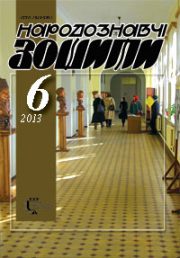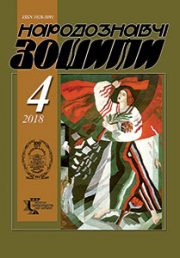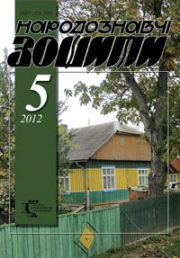The Ethnology Notebooks. 2020. № 4 (154), 960
UDK [94:314.1.02](477.83-22)”194/195”(093.2)
DOI https://doi.org/10.15407/nz2020.04.960
CENSUS OF POPULATION AND ITS PROPERTY STATUS IN SELYSKO VILLAGE, LVIV REGION (1940—1941, 1950-ies)
HORBAL Маrіa
- ORCID ID: https://orcid.org/0000-0001-9287-8336
- leading scientific editor,
- The Institute of Ethnology of the National
- Academy of Sciences of Ukraine,
- 15, Svobody Avenue, 79000, Lviv, Ukraine
- Contacts: e-mail:horbal.m@gmail.com
Abstract. Introduction. The article is based on two original documents that had been written at the request of the Village Council and kept in the private archives of the two villagers — residents of Selysko. Those documents are «Census of the population of Selysko village in Lviv region and its property status (1940—1941)» and «Census of the population of Selisko village in Lviv region in 1950-ies».
The tradition of the census dates back to the times of the Austrian Empire. The first census was conducted in 1870 and have been repeated once in ten years. The Austrian authorities believed that over 10 years significant demographic changes appear in society, and therefore the state must be aware of the overal number of the population, particularly the number of men, women and children, their occupation, religion and nationality. In the case at hand, the census is also conducted once in 10 years, but its purpose is somewhat different — in addition to keeping track of the demography changes it also gathers information on the property status of the residents for the purpose of establishing and collecting taxes.
Problem statement. The subject of the research is the scientific reconstruction of the state policy of the Soviet government in the aspect of management in the villages of Western Ukraine. The purpose of this article is to show the results of the census of Selysko village, now Pustomyty district, Lviv region, and property status of its residents. The research focuses on documents stored in the private archives of the two villagers. Both of these documents are official as they were created and endorsed with proper seals at the request of the Village Council in order to record the number of peasants, their property status and its taxation.
Methods. In a comprehensive analysis of the data related to the population of Selisko village and characteristics of its property status, a method of the structural research is mainly used in this article. Also, a comparative method is used, as this article includes references to rural life since the establishment of the collective farm.
Conclusions. The article concludes by outlining the changes that have taken place in the village over many decades due to the establishment of the collective farm (loss of land) and the decrease in the population due to its outflow to the city (to Vynnyky and Lviv).
Keywords: v. Selisko, Lviv region, census, land, homestead, collective farm.
Received 27.07.2020
REFERENCES
- Dr. Levitsky Cost (1900). About the census of people. Lviv: Prosvita [in Ukrainian].
- State Archives of Lviv Region. S. Р-285. D. 1. С. 11. S. 24 [in Ukrainian].






